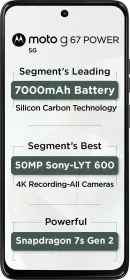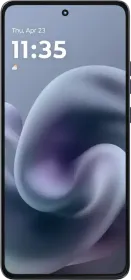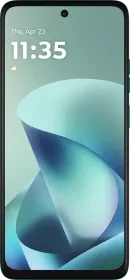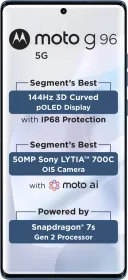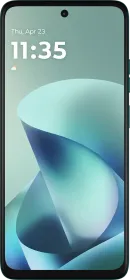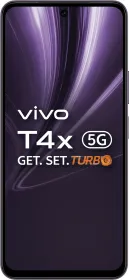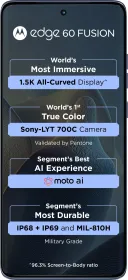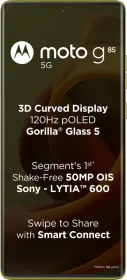It has been over two months since I purchased the iPhone 17 (256GB). Since then, I’ve captured over 200GB of photos and videos, comprising over 3000 images and around 500 videos (I recently transferred them to my external storage device). In my experience with the device, it features an excellent primary camera, an extraordinary selfie shooter (thanks to the new sensor), and a slightly less impressive but upgraded ultrawide camera. Have a closer look at my thoughts and the pictures that corroborate those below.
iPhone 17 Camera Review: Main Camera

The primary camera on the iPhone 17 is a Sony IMX904 48MP sensor with a 1/1.56-inch sensor size and an f/1.6 aperture. This is among the largest sensors in the category; it is larger than the 48MP 1/2-inch primary sensor on the Pixel 10 and is equivalent in size (but superior in aperture) to the 50MP primary sensor on the Galaxy S25.
By default, the camera captures at 24MP, but you can use the full 48MP resolution (via the toggle at the top-left of the camera app). Right off the bat, 24MP pictures carry more details than the standard 12MP Apple stuck with for years. In good lighting, the results are nothing short of superb.









Ample details aside, the camera sensor captures the right amount of light, even in the darkest areas (thanks to the Smart HDR 5 pipeline). So, even when you’re standing against the sun or in a scene with no light source in the background, the sensor retains plenty of detail in both the foreground and the background, with excellent contrast and optimum highlights.
The exposure control, one of the iPhone’s camera’s strongest suits, does a great job as well. You can get those DSLR-like pictures where only the part lit by sunlight is visible, with the rest dark, simply by locking the focus on the subject and dragging the exposure slider down. Even indoors, the iPhone 17 captures detailed, crisp, and clear images with little to no noise.









Apart from excellent dynamic range, iPhone 17’s color science, historically a strength for Apple iPhones, shows no signs of weakness either. You’ll get consistent yellows and reds across shots (visible in the samples above). The primary sensor does a great job at preserving the underlying red and yellow tones, generating one of the most accurate skin tones on a smartphone in 2025.






Thanks to the large sensor size, close-up shots have ample background blur. If the primary camera is a 9.5/10 in broad daylight, it only drops to around 8.5/10 in low light. Even without the Night Mode, the sensor captures some clear, sharp pictures with minimal noise (especially in the darker areas).
However, giving credit where due, Night Mode, if you can hold the iPhone perfectly still for a few seconds, does an incredible job of capturing more detail in the picture, increasing color vibrancy, and making near-pitch-dark scenarios appear well-lit. There is some oversharpening, especially in foliage, in images with extreme contrast or tricky lighting conditions, but I didn’t notice any overexposure in the pictures either.












Moreover, you should be pleased with the iPhone 17’s primary camera, especially if you’re capturing a landscape, a close-up shot of a flower (with ample natural bokeh effect in the background), a picture of your friend, of the tempting dishes served in fancy cafes, a busy street, or the sunset.
The downside, however, is that the color profile is too flat in nighttime pictures unless you switch on the flash or there’s a light source in the composition.
iPhone 17 Camera Review: Ultrawide Camera

The ultrawide camera on the iPhone 17 uses a new Sony IMX972 48MP sensor paired with a 1/2.55″ sensor and a f/2.2 aperture. While this is among the largest ultrawide sensors in the competition and features autofocus (for macro photography), it is among the weakest aspects of the iPhone 17’s camera system: here’s why.
Capturing photos in broad daylight is fine; results are sharp and crisp, and often use the same color processing as the main camera. The increased resolution helps capture additional details, often enough to reframe the picture afterward, and that’s good. Like the primary camera, the ultrawide also shoots pictures at 24MP by default.






There’s a bit of distortion in the pictures, but only when the subject is standing pretty close to the camera (in which case it can appear elongated near the edges). Another downside is that the pictures, even in the 48MP resolution, aren’t as sharp as the ones captured with the primary sensor, and there’s a noticeable amount of noise as well (especially in poorly-lit scenarios).






The ultrawide camera only gained autofocusing capability with the iPhone 16, and the feature worked flawlessly on my iPhone 16. However, with the iPhone 17, the ultrawide camera has lost complete focus at times, especially when capturing nighttime or low-light photos.


While the primary camera’s focus works perfectly, the ultrawide camera refuses to focus in such scenarios. I’ve added a sample of one such scenario below, so you can get an idea about it. It was only after I moved a few steps back and tried focusing a couple of times that I could get a sharper picture, but with an apparent color difference.



It could be because Apple is using a new camera sensor, and it takes time to optimize new hardware alongside the existing software, computational pipeline, and HDR and color science algorithms. However, I sincerely hope the ultrawide camera on my iPhone 17 improves over time.
I’m also attaching a couple of other scenarios where the ultrawide camera didn’t perform as well as the main camera. In the first set of pictures, there’s a difference in how the camera or the ISP treats the sky, while in the second, the ultrawide camera seems to have missed details in the marble flooring on the first floor (while the primary camera has retained them).






Moreover, the ultrawide camera is a solid 8/10, given its mixed performance in daylight and at night.






iPhone 17 Camera Review: Selfie Camera

The most interesting and exciting aspect of the iPhone 17’s camera system for me is the 18MP Sony IMX914 Center Stage front camera with an f/1.9 aperture, an octagonal sensor (marketed as a square sensor), OIS, and PDAF.
By default, the sensor captures images at 7MP resolution (a step down from the 12MP selfie camera), since it crops in on the center of the sensor. However, it is when you zoom out that you notice the dramatically wide field of view, enough to accommodate a group of eight to 10 people in a selfie. The resolution in zoomed-out mode is 18MP.


Apart from the wide field of view, the front camera also lets you capture selfies in a 4:3 horizontal aspect ratio, and it has become my favorite over the two months I’ve owned and used the iPhone 17.
If you’re taking a selfie in landscape mode, you can either zoom out to include everyone in the frame or capture a vertical 3:4 photo.


As usual, the dynamic range is excellent, and so is the color science that helps the front camera capture almost true-to-life skin tones. The selfie camera also includes optical image stabilization, which compensates (to a reasonable extent) for the unintentional hand movements or jerks, while PDAF helps maintain the crispness in the picture.


Though the app switches to 18MP resolution in the widest field of view, the pictures come out a tad soft, especially in the evening or at night. The colors appear a bit washed out in low-light environments as well.
Moreover, the new selfie camera on the iPhone 17 unlocks new ways to capture individual and group photos. Of course, it also unlocks Center Stage functionality during video calls in supported apps (I’ve used it on FaceTime and WhatsApp so far), which pans and zooms to keep you in the center of the frame.












All in all, I’d rate the iPhone 17’s front camera a solid 9/10. However, Apple could improve the camera’s low-light performance.
iPhone 17 Camera Review: Videos

The iPhone 17 can record Dolby Vision videos in 4K resolution at up to 60 fps; that’s the limit. While the primary camera can’t record 8K videos as such, it remains the benchmark for stable, well-exposed, and balanced videos with crunchy audio (with enough kick in vocals). The second-generation sensor-shift optical image stabilization performs very well, even during extensive hand movements (while walking or running).
However, while the ultrawide camera performs as well as the primary camera in broad daylight, it doesn’t hold up as well in the evening or at night, to the point that I refrain from switching between the lenses in a poorly lit environment (as the difference in quality is quite apparent). The ultrawide camera video is noisier, with fewer details and washed-out colors, compared to the primary camera.
Weirdly enough, I’ve noticed that the camera automatically switches to macro mode in video while shooting from the primary sensor (at 1x) in low-light conditions. To remedy this, I’ve to disable the macro mode manually.
The front camera lies between the primary and ultrawide cameras, where it performs much better than the latter. Yes, the videos are a bit softer in low light, but the overall quality is acceptable. What’s new is that you can record 16:9 horizontal videos while holding the phone facing you in portrait orientation, thanks to the 18MP Center Stage camera.
In the end, I’d rate the video performance on the iPhone 17 a solid 8.5/10, with the ultrawide and selfie cameras still needing some improvement.
iPhone 17 Camera Review: Verdict
The iPhone 17 offers a solid camera system that can capture portraits, close-up shots, and macro photographs, has excellent dynamic range, and a completely new Center Stage front camera. However, for the same price, or even a lesser price, the latest Android flagships offer a dedicated telephoto camera as well.
So, if you just want to purchase the iPhone 17 and are worried about the camera performance, it shouldn’t disappoint you. However, you might have a hard time justifying a purchase for the camera setup itself. The primary camera’s video capabilities are quite excellent, which is why you see most creators recording videos with an iPhone, and that could be a selling point as well.

You can follow Smartprix on Twitter, Facebook, Instagram, and Google News. Visit smartprix.com for the latest tech and auto news, reviews, and guides.















